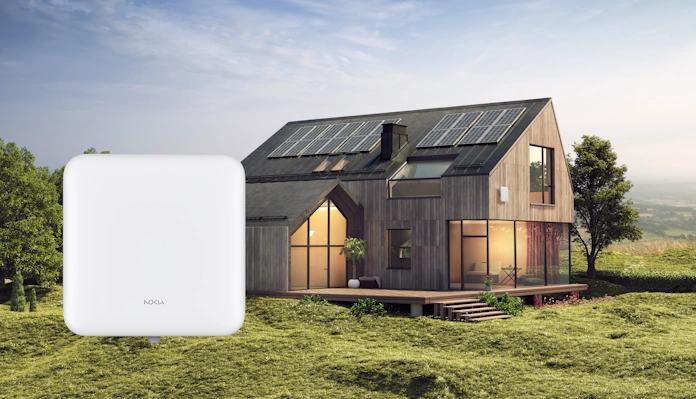FWA is emerging as a cost-efficient, agile broadband solution
Despite its “fiber-first” approach to networks, Nokia knows that fiber won’t be the economical solution for every deployment, particularly in hard-to-reach or lower-density areas. Thanks to the additional capacity of 5G, Fixed Wireless Access (FWA) is proving to be a cost-efficient, agile solution for providing high-speed, reliable broadband across North America.
“FWA is a very useful tool, even for fiber-centric converged operators with both fixed and wireless assets,” Keith Russell, Nokia’s Fixed Networks marketing director, told RCR Wireless News, adding that new services can be rolled out quickly with FWA requiring only a CPE to be shipped to a customer for self-installation, providing a unique level of agility that benefites both the operator and the consumer. This agility, explained Russell, allows mobile providers that lack fixed assets to quickly roll out services wherever they have a mobile footprint.
Nokia, then, has been focused on delivering customer premises equipment (CPE) that takes advantage of this newfound wireless agility. The company previously launched an indoor 5G FWA gateway, which combines 4G/5G WAN with integrated Wi-Fi. These types of solutions work great for indoor deployments and in locations where 5G signals are strong, but as Russell pointed out, operators are increasingly finding that they need a solution that performs well in areas where signal strengths are weak or for buildings with high signal attenuation. For these deployments, Nokia has introduced a 5G FWA receiver, that mounts to the outside of the home and utilizes very high gain antennas to make the most of weak signals. It complements the gateway, by performing well in these more challenging use cases.
To ensure a quality service, shared Russell, Nokia has made sure that its latest CPE products — both the gateway and the newer receiver — support all the most “important” North American spectrum bands.
“Licensed 4G and 5G bands for those that have access and unlicensed Citizens Broadband Radio Service (CBRS) spectrum for those that don’t. and an operator that actually owns spectrum can still use CBRS to help increase capacity,” he continued, explaining that with carrier aggregation — which refers to the use of multiple spectrum channels simultaneously — operators can utilize whatever spectrum is available in any given area, both licensed and unlicensed, resulting in the fastest possible service for the end-user.
A recent Dell’Oro Group report supports Russell’s FWA spectrum assessment, predicting that sub 6 GHz will be the most popular spectrum choice for FWA deployments, and CBRS, while not a huge portion, will still play a part. However, the report also reveals that millimeter wave (mmWave) is also expected to see growth in the FWA market. “The mid-bands will dominate,” acknowledged Russell, but added that 5G mmWave offers huge capacity gains that can be used to help operators to boost capacity and to serve both mobile and FWA users well into the future.
A great FWA service takes the in-home needs of the consumer into account, and therefore, managing the service to ensure that every user has a quality experience is paramount. This includes subscriber self-installation of the device wherever possible. Nokia, for instance, provides a smartphone application that helps guide the consumer through the CPE installation process by recommending where to install gateways or receivers for the best connection. Using tools that gather information from the network about the location of the cell sites, the app knows which cell site it needs to attach to and will guide that installation process.
Nokia’s goal, summarized Russell, is to enable operators to “overcome the challenges of using traditionally mobile-centric networks to connect fixed users with predictable and consistent results,” whether they’re in a bustling downtown, a quiet suburban neighborhood or out in the countryside.

